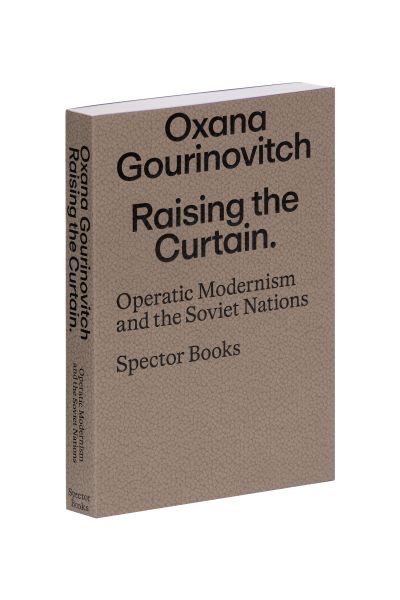Oxana Gourinovitch
Raising the Curtain
Operatic Modernism and the Soviet Nations
- Kategorie
- Fachbücher - Wissenschaftliche Bücher - Schulbücher
Begründung der Jury
Die Autorin lüftet in diesem umfangreichen Band den Geschichtsvorhang zweier Opernhäuser, die in der einstigen sowjetischen Peripherie von bedeutenden Architektinnen entworfen wurden: Sie rekonstruiert die Planung und den Bau des Theaters für Oper und Ballett in Vilnius (1962–1974) sowie der Komischen Oper in Minsk (1973–1981) und beleuchtet deren Entstehung im zeitlichen, politischen und kulturellen Kontext. Hierbei zeigt sich auch, wie sich die Nationenbildung innerhalb der Sowjetunion entwickelte und inwiefern die Architektur eine Rolle bei deren Zusammenbruch spielte.
Reduziert typografisch gestaltet, besticht bereits der Schutzumschlag durch die außergewöhnliche Haptik des gewählten Materials. Nimmt man diesen ab, so wird der offene Rücken sowie ein Blanko-Umschlag in kräftigem Lila sichtbar – die farblich abgestimmte Fadenbindung offenbart die Liebe zum Detail. Im Inneren untermauern der feinfühlige Umgang mit der Typografie sowie der Mut zur extremen Höhe des Satzspiegels die gestalterische Qualität. Der mittige Blocksatz des Fließtextes ist dabei durchdacht angelegt, werden doch die großzügigen Randspalten zur Auflösung der zahlreichen Fußnoten sowie für die Bebilderung samt Legenden genutzt. Auf diese Weise ergibt sich ein müheloser Lesefluss und zugleich eine dynamische Gesamtwirkung.
Bemerkenswert ist auch das bestechend scharfe Druckbild sowohl auf dem rauen Naturpapier als auch auf dem matt-glänzenden Bilderdruckpapier, das für die farbige Fotostrecke am Ende des Bandes zum Einsatz kam. Innerhalb des überzeugenden Gesamtkonzepts gefiel der Jury dieser Materialwechsel ebenso gut wie das optimale Aufschlagverhalten.
///
In this substantial volume, the author revisits the planning and construction of two Soviet-era opera houses – the Opera and Ballet Theatre in Vilnius (built 1962–1974) and the Comic Opera in Minsk (built 1973–1981) – both of which were designed by important female architects. She illuminates each building’s genesis, setting it in its historical, political and cultural context. The book also sheds light on processes of Soviet nation-building and on the extent to which architecture played a role in the Soviet Union’s collapse.
Featuring a pared-back, typographic design, the dust jacket is particularly notable for the material’s exceptional tactility. Removing the jacket reveals an exposed spine and a blank cover in bold purple, the matching sewn binding underlining the design’s attention to detail. Inside, subtly chosen typography and an audaciously high type area emphasise the quality of the design. The centred, fully justified type column for the running copy is a similarly well thought-out detail, allowing the generous margins to be used for the many footnotes as well as for illustrations and their captions. This makes for an effortless read while creating a dynamic overall effect.
Equally noteworthy is the impressively sharp printing, be it on the rough, uncoated paper or the semi-gloss art paper used for the colour-photo section at the end. Alongside the optimum openability, this change in material within a coherent overall concept was particularly commended by our judges.



